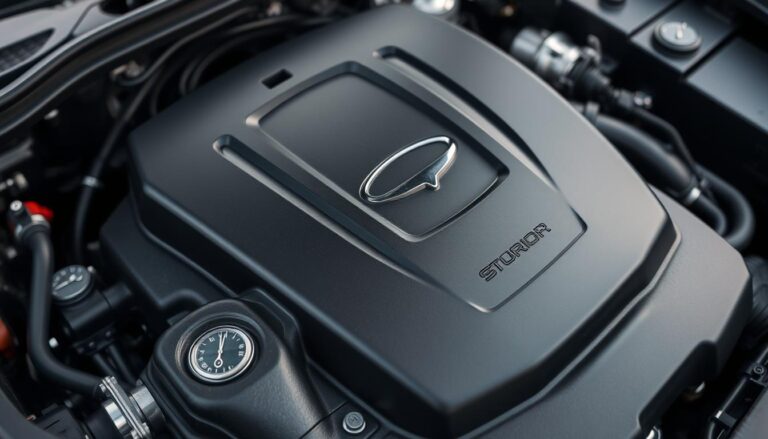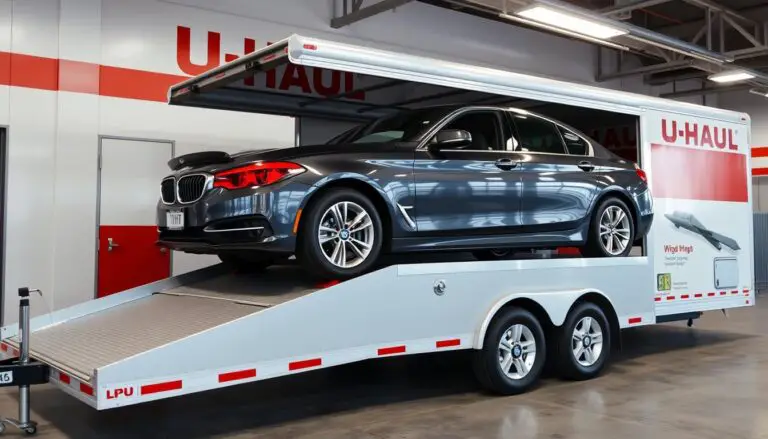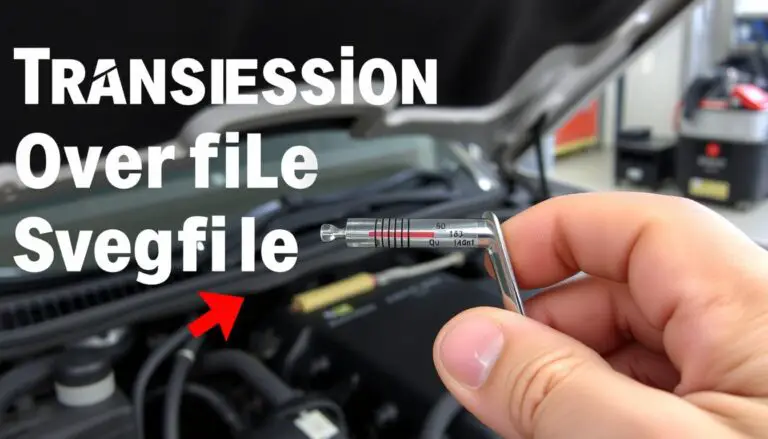Owners of the Polaris Ranger often encounter starting issues that can be frustrating and disrupt their outdoor activities. Troubleshooting these common problems is essential to get back on track.
Understanding the root causes of these issues is crucial to applying the right fixes. Whether it’s a faulty battery, ignition switch, or other components, identifying the problem is the first step towards resolving it.
By following a systematic approach to troubleshooting, owners can diagnose and fix the issues, ensuring their vehicle is back in operation.
Key Takeaways
- Identify common starting issues in Polaris Ranger
- Understand the importance of troubleshooting
- Learn how to diagnose and fix problems
- Apply systematic troubleshooting techniques
- Get tips on maintaining your Polaris Ranger
Understanding Polaris Ranger Starting Problems: Common Issues and Fixes
Diagnosing starting issues in your Polaris Ranger requires a comprehensive understanding of its starting system. The starting system is a complex interplay of various components working together to turn the engine over.
How the Polaris Ranger Starting System Works
The Polaris Ranger’s starting system involves several key components, including the battery, starter motor, ignition switch, and associated wiring. Understanding how these components function is crucial to identifying starting problems.
Key Components and Their Functions
The battery provides the necessary power, while the starter motor turns the engine over. The ignition switch activates the starter motor, and the wiring connects these components.
Normal Starting Sequence
When you turn the ignition switch to the start position, it sends a signal to the starter motor, which then turns the engine over. If any part of this sequence fails, the engine won’t start.
Signs of Starting Problems
Starting problems can manifest in different ways, including no-start and hard-start symptoms. Recognizing these signs is vital to troubleshooting.
No-Start Symptoms
A no-start condition means the engine doesn’t turn over at all. This could be due to a dead battery, faulty starter motor, or ignition switch issues.
Hard-Start Symptoms
Hard-start symptoms occur when the engine is difficult to start but eventually turns over. This could be due to a weak battery, fuel system issues, or worn-out components.
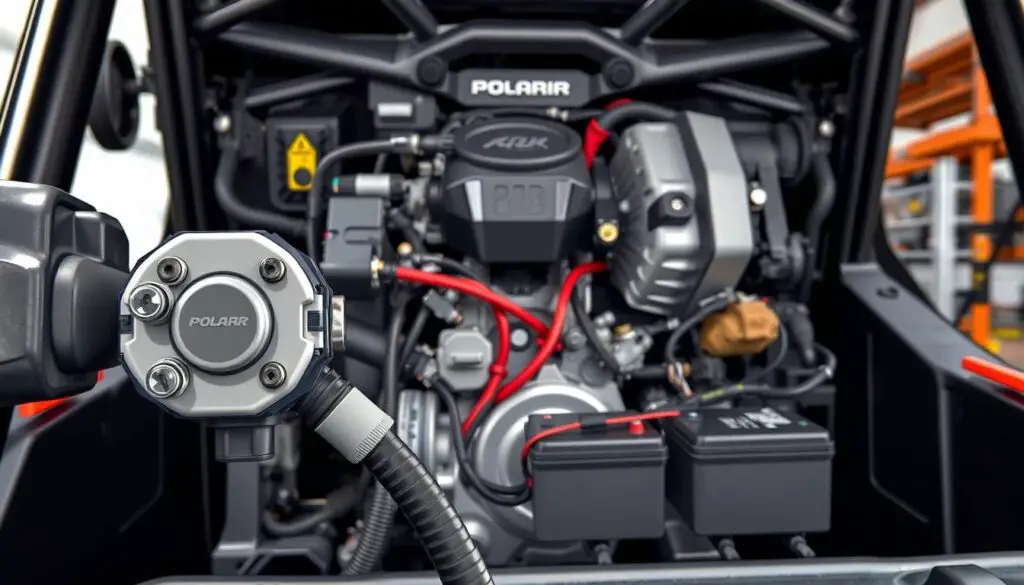
| Symptom | Possible Cause | Solution |
|---|---|---|
| No-start | Dead battery, faulty starter motor | Replace battery, check starter motor |
| Hard-start | Weak battery, fuel system issues | Charge or replace battery, inspect fuel system |
Battery-Related Starting Problems
A dead or weak battery is a common culprit behind Polaris Ranger starting problems. When the battery is not functioning correctly, it can prevent the engine from turning over, leaving you stranded. Understanding how to identify and address battery-related issues is crucial for getting your Polaris Ranger up and running.
Identifying a Dead or Weak Battery
Identifying a dead or weak battery involves a few simple steps. First, you need to inspect the battery visually, and then you may need to use a multimeter for more detailed testing.
Visual Inspection Steps
Begin by inspecting the battery for any visible signs of wear or damage, such as corrosion on the terminals or cracks in the casing. Make sure the connections are clean and secure. Corrosion can be cleaned with a mixture of baking soda and water, and a wire brush.
Using a Multimeter for Testing
To test the battery’s voltage, use a multimeter. A fully charged battery should read around 12.6 volts. If the voltage is significantly lower, it may indicate a dead or weak battery. You can also perform a load test to see how the battery performs under stress.
Charging System Issues
The charging system is equally important as the battery itself. Issues with the charging system can lead to a dead battery or prevent it from charging properly.
Testing the Stator and Voltage Regulator
The stator and voltage regulator are key components of the charging system. Testing these components involves using a multimeter to check for the correct voltage output. The stator should produce a certain voltage when the engine is running, and the voltage regulator should ensure that the voltage is within a safe range for the battery.
Addressing Parasitic Drains
A parasitic drain occurs when something in the vehicle’s electrical system continues to draw power from the battery even when the engine is off. To identify a parasitic drain, disconnect the negative battery cable and use a multimeter to check for any current draw. If you find a significant drain, you’ll need to investigate further to determine the cause.
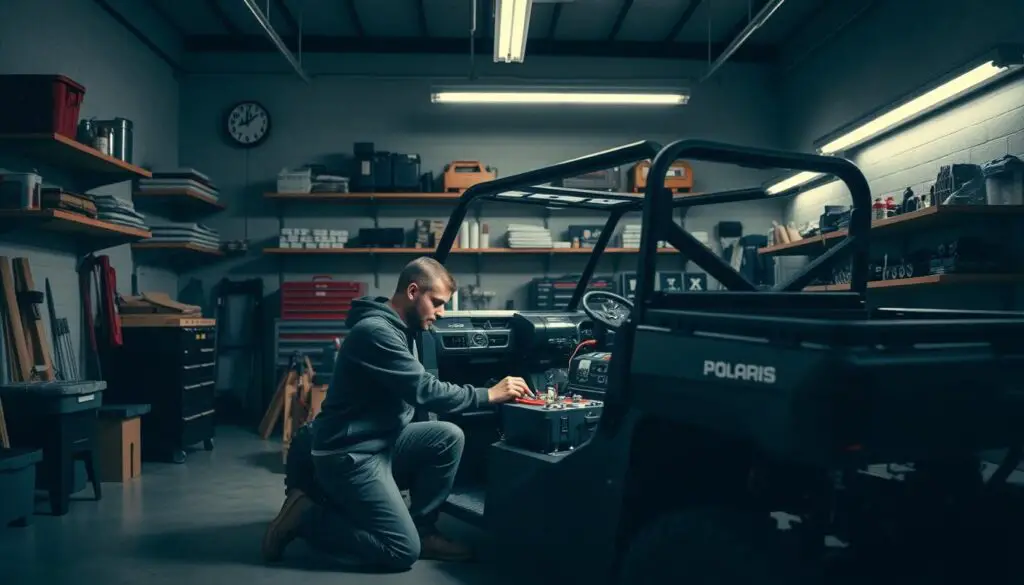
Battery Maintenance and Replacement
Regular maintenance can extend the life of your Polaris Ranger’s battery. Proper selection and jump-starting procedures are also crucial.
Proper Battery Selection
When replacing the battery, ensure you select a battery that matches the specifications recommended by the manufacturer. Consider factors such as cold cranking amps (CCA) and reserve capacity to ensure the battery can handle your vehicle’s needs.
Jump-Starting Procedures
If you need to jump-start your Polaris Ranger, make sure to follow the correct procedures to avoid damaging the electrical system. Connect the jumper cables in the correct order (positive to positive, negative to negative, and then negative to a metal surface on the vehicle), and let the working vehicle’s engine run for a few minutes before attempting to start your Polaris Ranger.
Fuel System Troubleshooting
Fuel system troubleshooting is a crucial step in diagnosing Polaris Ranger starting problems. The fuel system is a critical component that requires regular maintenance to ensure optimal performance.
Checking Fuel Quality and Level
The first step in fuel system troubleshooting is to check the fuel quality and level. Bad or stale fuel can cause starting issues, so it’s essential to use fresh fuel.
Draining Bad Fuel
If you’ve been using bad or stale fuel, it’s necessary to drain the fuel tank and replace it with fresh fuel. This simple step can often resolve starting problems.
Proper Fuel-Oil Mixture for Two-Stroke Models
For two-stroke Polaris Ranger models, it’s crucial to maintain the correct fuel-oil mixture. The recommended ratio is typically between 40:1 and 50:1. Always refer to your owner’s manual for the exact specifications.
Fuel Delivery Problems
Fuel delivery problems can also cause starting issues. Issues with the fuel pump or fuel filter can restrict fuel flow, making it difficult to start the engine.
Fuel Pump Testing
To test the fuel pump, check the fuel pressure using a fuel pressure gauge. Compare the reading to the manufacturer’s specifications to determine if the pump is functioning correctly.
Fuel Filter Inspection and Replacement
Inspect the fuel filter for any signs of damage or clogging. Replace the filter if necessary, and ensure that it’s properly secured to prevent any fuel leaks.
Carburetor and Fuel Injector Issues
Carburetor and fuel injector issues can also affect the starting performance of your Polaris Ranger. Clogged jets or injectors can prevent the proper air-fuel mixture, making it difficult to start the engine.
Cleaning Clogged Jets and Injectors
To clean clogged jets and injectors, use a carburetor cleaner or fuel injector cleaning solution. Follow the manufacturer’s instructions for the recommended cleaning procedure.
Adjusting Air-Fuel Mixture
Adjusting the air-fuel mixture can also help resolve starting issues. Refer to your owner’s manual for the recommended adjustment procedure.
| Issue | Cause | Solution |
|---|---|---|
| Bad or stale fuel | Using old or contaminated fuel | Drain and replace with fresh fuel |
| Fuel delivery problems | Clogged fuel filter or faulty fuel pump | Inspect and replace fuel filter, test fuel pump |
| Carburetor and fuel injector issues | Clogged jets or injectors | Clean or replace jets and injectors |
Electrical System Diagnostics
Diagnosing electrical system issues is crucial for resolving starting problems in your Polaris Ranger. The electrical system is complex, involving several components that work together to ensure your vehicle starts reliably. When issues arise, a systematic approach to diagnostics is necessary to identify and fix the problem.
Starter Motor Problems
The starter motor is responsible for turning the engine over when you start your Polaris Ranger. Issues with the starter motor can prevent the engine from turning over.
Testing Starter Solenoid
The starter solenoid acts as a relay, sending power to the starter motor when you turn the ignition switch. Testing the solenoid involves checking for voltage at the solenoid when the ignition is turned to start. If there’s no voltage, the issue might be with the ignition switch or wiring. For more detailed troubleshooting guides, you can refer to resources like this article on troubleshooting similar issues in other vehicles.
Inspecting Starter Brushes and Commutator
Wear on the starter brushes and commutator can lead to poor performance or failure of the starter motor. Inspecting these components for wear and replacing them if necessary can resolve starting issues.
Ignition System Issues
The ignition system generates the spark needed to ignite the fuel in your Polaris Ranger’s engine. Problems with this system can prevent the engine from starting.
Spark Plug Inspection and Testing
Spark plugs are a critical component of the ignition system. Inspecting them for wear or fouling and testing their ability to spark can help diagnose ignition system issues.
Ignition Coil and CDI Troubleshooting
The ignition coil and CDI (Capacitor Discharge Ignition) unit are responsible for generating the high voltage needed for spark plugs to fire. Troubleshooting these components involves checking for proper voltage output and ensuring they’re functioning correctly.
Wiring and Connection Problems
Wiring and connection issues can cause a range of problems, including starting issues. Corrosion or damage to wiring and connections can interrupt the flow of electricity.
Checking for Corroded Connections
Inspecting connections for signs of corrosion and cleaning or replacing them as needed can resolve many electrical system issues.
Tracing and Repairing Damaged Wires
Damaged wires can cause shorts or opens in the electrical circuit. Tracing the wiring to identify any damage and repairing or replacing the wires as necessary is crucial.
| Component | Common Issues | Diagnostic Steps |
|---|---|---|
| Starter Solenoid | No voltage at solenoid | Check ignition switch and wiring |
| Spark Plugs | Wear or fouling | Inspect and test spark plugs |
| Wiring and Connections | Corrosion or damage | Inspect and clean or replace as needed |
By systematically diagnosing the electrical system, you can identify and fix the root cause of starting issues in your Polaris Ranger, getting you back on the trail quickly.
Advanced Troubleshooting and Prevention
For persistent Polaris Ranger starting issues, advanced troubleshooting techniques are essential. These methods help diagnose complex problems that basic checks might miss.
Engine Mechanical Issues
Engine mechanical problems can cause starting issues. Common problems include low compression, timing issues, and faulty sensors.
Compression Testing Procedure
A compression test can reveal engine health. To perform this test, you’ll need a compression gauge. Follow the manufacturer’s instructions for the correct procedure.
Addressing Timing and Sensor Problems
Timing issues and faulty sensors can prevent your Polaris Ranger from starting. Check the timing belt or chain for wear and ensure sensors are clean and functioning correctly.
Seasonal Maintenance to Prevent Starting Issues
Regular maintenance is key to preventing starting problems. Seasonal checks can help identify potential issues before they become major problems.
Winter Storage Preparation
Before storing your Polaris Ranger for winter, ensure the battery is fully charged, and consider using a trickle charger. Add fuel stabilizer to prevent fuel degradation.
Spring Start-Up Procedures
When starting your Polaris Ranger after winter storage, check the oil, battery, and tires. Follow the manufacturer’s guidelines for spring start-up procedures.
When to Seek Professional Help
Knowing when to seek professional help is crucial. If you’re unsure about a diagnosis or feel uncomfortable performing a repair, it’s time to consult a professional.
Diagnostic Tools Limitations
While diagnostic tools are helpful, they have limitations. Complex issues may require specialized equipment and expertise.
Finding a Qualified Polaris Service Center
To find a qualified Polaris service center, check for certified technicians and read reviews. Ensure they have experience with your model.
| Issue | Symptoms | Solution |
|---|---|---|
| Low Compression | Engine won’t start or runs poorly | Perform compression test, repair or replace engine components |
| Timing Issues | Engine won’t start, poor performance | Check timing belt or chain, adjust or replace as needed |
| Faulty Sensors | Engine won’t start, erratic performance | Clean or replace faulty sensors |
Conclusion
Resolving Polaris Ranger starting issues requires a systematic approach to troubleshooting and maintenance. By understanding the common problems that can cause starting issues, such as battery-related problems, fuel system faults, and electrical system malfunctions, owners can take the necessary steps to diagnose and fix these issues.
Regular maintenance is crucial in preventing starting problems. This includes checking and maintaining the battery, fuel system, and electrical components. Proper diagnosis is also essential to identify the root cause of the issue, ensuring that the correct fix is applied.
By following the troubleshooting steps outlined in this guide, Polaris Ranger owners can effectively identify and resolve common starting problems. Whether it’s a dead battery, faulty starter motor, or fuel delivery issue, the right diagnosis and maintenance can get the vehicle running smoothly again.
For persistent issues, seeking professional help from a qualified mechanic or Polaris dealership can provide the necessary expertise to resolve complex problems and get the vehicle back in operation.
FAQ
What are the most common causes of Polaris Ranger starting problems?
The most common causes include battery-related issues, fuel system problems, electrical system faults, and engine mechanical issues.
How do I identify a dead or weak battery in my Polaris Ranger?
You can identify a dead or weak battery by performing a visual inspection, checking the battery voltage with a multimeter, and testing the charging system.
What are the signs of fuel delivery problems in a Polaris Ranger?
Signs of fuel delivery problems include difficulty starting the engine, poor engine performance, and fuel leaks.
How do I troubleshoot electrical system issues in my Polaris Ranger?
To troubleshoot electrical system issues, check the starter motor, ignition system, and wiring connections, and test the spark plugs and ignition coil.
What maintenance tasks can I perform to prevent Polaris Ranger starting issues?
Regular maintenance tasks include checking and maintaining the battery, fuel system, and electrical system, as well as performing seasonal maintenance such as winter storage preparation and spring start-up procedures.
When should I seek professional help for my Polaris Ranger starting problems?
You should seek professional help if you are unable to diagnose or fix the issue yourself, or if you are not comfortable with performing advanced troubleshooting techniques.
How do I find a qualified Polaris service center?
You can find a qualified Polaris service center by visiting the Polaris website, checking online reviews, and asking for referrals from friends or other Polaris owners.
What is the proper procedure for jump-starting a Polaris Ranger?
The proper procedure for jump-starting a Polaris Ranger involves connecting the jumper cables to the correct terminals, starting the working vehicle, and then starting the Polaris Ranger.
How do I test the stator and voltage regulator in my Polaris Ranger?
You can test the stator and voltage regulator using a multimeter, following the manufacturer’s instructions and testing procedures.
